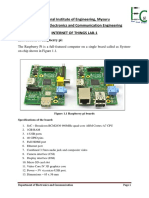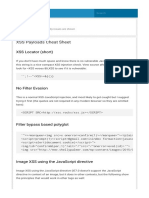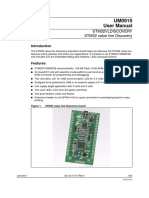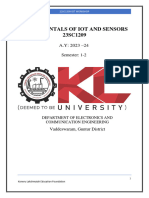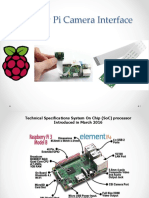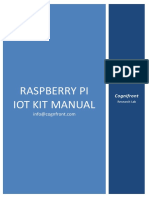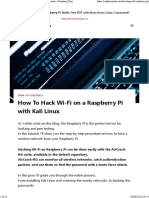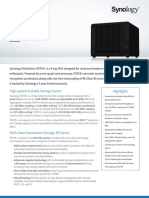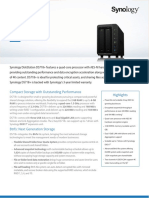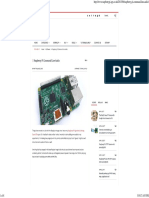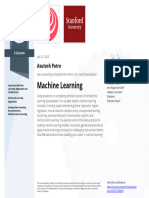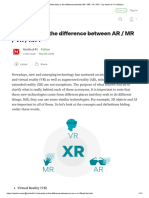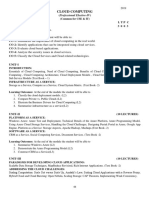Foundation
Raspberry Pi
Documentation
Computers
Accessories
Microcontrollers
Services
Pico C SDK
Raspberry Pi OS
Introduction
Edit this on GitHub
Raspberry Pi OS is a free operating system based on
Debian, optimised for the Raspberry Pi hardware, and is
the recommended operating system for normal use on a
Raspberry Pi. The OS comes with over 35,000 packages:
pre-compiled software bundled in a nice format for easy
installation on your Raspberry Pi.
Raspberry Pi OS is under active development, with an
emphasis on improving the stability and performance of
as many Debian packages as possible on Raspberry Pi.
Updating and Upgrading
Raspberry Pi OS
Edit this on GitHub
It’s important to keep your Raspberry Pi up to date. The
Grst and probably the most important reason is security.
A device running Raspberry Pi OS contains millions of
lines of code that you rely on. Over time, these millions of
lines of code will expose well-known vulnerabilities, which
are documented in publicly available databases meaning
that they are easy to exploit. The only way to mitigate
these exploits as a user of Raspberry Pi OS is to keep
your software up to date, as the upstream repositories
track CVEs closely and try to mitigate them quickly.
The second reason, related to the Grst, is that the
software you are running on your device most certainly
contains bugs. Some bugs are CVEs, but bugs could also
be affecting the desired functionality without being
related to security. By keeping your software up to date,
you are lowering the chances of hitting these bugs.
Using APT
The easiest way to manage installing, upgrading, and
removing software is using APT (Advanced Packaging
Tool) from Debian. To update software in Raspberry Pi
OS, you can use the apt tool from a Terminal window.
Keeping your Operating System up to Date
How to upgrade your Raspberr…
APT keeps a list of software sources on your Raspberry Pi
in a Gle at /etc/apt/sources.list. Before installing
software, you should update your package list with apt
update. Go ahead and open a Terminal window and type:
sudo apt update
Next, upgrade all your installed packages to their latest
versions with the following command:
sudo apt full-upgrade
Note that full-upgrade is used in preference to a
simple upgrade, as it also picks up any dependency
changes that may have been made.
Generally speaking, doing this regularly will keep your
installation up to date for the particular major Raspberry
Pi OS release you are using (e.g. Buster). It will not update
from one major release to another, for example, Stretch to
Buster or Buster to Bullseye.
However, there are occasional changes made in the
Raspberry Pi OS image that require manual intervention,
for example a newly introduced package. These are not
installed with an upgrade, as this command only updates
the packages you already have installed.
NOTE
The kernel and Grmware are installed as a Debian
package, and so will also get updates when using the
procedure above. These packages are updated
infrequently and after extensive testing.
If moving an existing SD card to a new Raspberry Pi
model (for example the Raspberry Pi Zero 2 W), you may
also need to update the kernel and the Grmware Grst
using the instructions above.
Running Out of Space
When running sudo apt full-upgrade, it will show
how much data will be downloaded and how much space
it will take up on the SD card. It’s worth checking with df
-h that you have enough free disk space, as unfortunately
apt will not do this for you. Also be aware that
downloaded package Gles (.deb Gles) are kept in
/var/cache/apt/archives. You can remove these in
order to free up space with sudo apt clean (sudo
apt-get clean in older releases of apt).
Upgrading from Previous Operating System
Versions
WARNING
Upgrading an existing image is possible, but is not
guaranteed to work in every circumstance and we do
not recommend it. If you do wish to try upgrading
your operating system version, we strongly suggest
making a backup Grst — we can accept no
responsibility for loss of data from a failed update.
The latest version of Raspberry Pi OS is based on Debian
Bullseye. The previous version was based on Buster. If
you want to perform an in-place upgrade from Buster to
Bullseye (and you’re aware of the risks) see the
instructions in the forums.
Searching for Software
You can search the archives for a package with a given
keyword with apt-cache search:
apt-cache search locomotive
sl - Correct you if you type `sl' by mistake
You can view more information about a package before
installing it with apt-cache show:
apt-cache show sl
Package: sl
Version: 3.03-17
Architecture: armhf
Maintainer: Hiroyuki Yamamoto <yama1066@gmail.com>
Installed-Size: 114
Depends: libc6 (>= 2.4), libncurses5 (>= 5.5-5~),
Homepage: http://www.tkl.iis.u-tokyo.ac.jp/~toyoda
Priority: optional
Section: games
Filename: pool/main/s/sl/sl_3.03-17_armhf.deb
Size: 26246
SHA256: 42dea9d7c618af8fe9f3c810b3d551102832bf217a
SHA1: b08039acccecd721fc3e6faf264fe59e56118e74
MD5sum: 450b21cc998dc9026313f72b4bd9807b
Description: Correct you if you type `sl' by mista
Sl is a program that can display animations aimed
if you type 'sl' by mistake.
SL stands for Steam Locomotive.
Installing a Package with APT
sudo apt install tree
Typing this command should inform the user how much
disk space the package will take up and asks for
conGrmation of the package installation. Entering Y (or
just pressing Enter, as yes is the default action) will
allow the installation to occur. This can be bypassed by
adding the -y \ag to the command:
sudo apt install tree -y
Installing this package makes tree available for the user.
Uninstalling a Package with APT
You can uninstall a package with apt remove:
sudo apt remove tree
The user is prompted to conGrm the removal. Again, the -
y \ag will auto-conGrm.
You can also choose to completely remove the package
and its associated conGguration Gles with apt purge:
sudo apt purge tree
Using rpi-update
rpi-update is a command line application that will
update your Raspberry Pi OS kernel and VideoCore
Grmware to the latest pre-release versions.
WARNING
Pre-release versions of software are not guaranteed
to work. You should not use rpi-update on any
system unless recommended to do so by a Raspberry
Pi engineer. It may leave your system unreliable or
even completely broken. It should not be used as part
of any regular update process.
The rpi-update script was originally written by Hexxeh,
but is now supported by Raspberry Pi engineers. The
script source is in the rpi-update repository.
What it does
rpi-update will download the latest pre-release version
of the linux kernel, its matching modules, device tree Gles,
along with the latest versions of the VideoCore Grmware.
It will then install these Gles to relevant locations on the
SD card, overwriting any previous versions.
All the source data used by rpi-update comes from the
rpi-Grmware repository. This repository simply contains a
subset of the data from the o]cial Grmware repository,
as not all the data from that repo is required.
Running rpi-update
If you are sure that you need to use rpi-update, it is
advisable to take a backup of your current system Grst as
running rpi-update could result in a non-booting
system.
rpi-update needs to be run as root. Once the update is
complete you will need to reboot.
sudo rpi-update
sudo reboot
It has a number of options documented in the rpi-update
repository.
How to get back to safety
If you have done an rpi-update and things are not
working as you wish, if your Raspberry Pi is still bootable
you can return to the stable release using:
sudo apt-get update
sudo apt install --reinstall libraspberrypi0 libra
You will need to reboot your Raspberry Pi for these
changes to take effect.
Playing Audio and Video
Edit this on GitHub
WARNING
The following documentation refers to Raspberry Pi OS
Buster and earlier versions. OMXPlayer has been
deprecated in the latest OS release. If you are running
Bullseye, VLC is now the recommended alternative.
The simplest way of playing audio and video on
Raspberry Pi is to use the installed OMXPlayer
application.
This is hardware accelerated, and can play back many
popular audio and video Gle formats. OMXPlayer uses the
OpenMAX (omx) hardware acceleration interface (API)
which is the o]cially supported media API on Raspberry
Pi. OMXPlayer was developed by the Kodi Project’s Edgar
Hucek.
The OMXPlayer Application
The simplest command line is omxplayer <name of
media file>. The media Gle can be audio or video or
both. For the examples below, we used an H264 video Gle
that is included with the standard Raspberry Pi OS
installation.
omxplayer /opt/vc/src/hello_pi/hello_video/test.h2
By default the audio is sent to the analog port. If you are
using a HDMI-equipped display device with speakers, you
need to tell omxplayer to send the audio signal over the
HDMI link.
omxplayer --adev hdmi /opt/vc/src/hello_pi/hello_v
When displaying video, the whole display will be used as
output. You can specify which part of the display you
want the video to be on using the window option.
omxplayer --win 0,0,640,480 /opt/vc/src/hello_pi/h
You can also specify which part of the video you want to
be displayed: this is called a crop window. This portion of
the video will be scaled up to match the display, unless
you also use the window option.
omxplayer --crop 100,100,300,300 /opt/vc/src/hello
If you are using the Raspberry Pi Touch Display, and you
want to use it for video output, use the display option to
specify which display to use. n is 5 for HDMI, 4 for the
touchscreen. With the Raspberry Pi 4 you have two
options for HDMI output. n is 2 for HDMI0 and 7 for
HDMI1.
omxplayer --display n /opt/vc/src/hello_pi/hello_v
How to Play Audio
To play an MP3 Gle, navigate to the location of the .mp3
Gle in the terminal using cd and then type the following
command:
omxplayer example.mp3
This will play the audio Gle example.mp3 through either
your monitor’s built-in speakers or your headphones,
connected via the headphone jack.
If you need an example Gle you can download one from
here using the following command:
wget https://raw.githubusercontent.com/raspberrypi
If you cannot hear anything, make sure your headphones
or speakers are connected correctly. Note that omxplayer
doesn’t use ALSA and so ignores the audio conGguration
set by raspi-config or amixer.
If omxplayer’s auto-detection of the correct audio output
device fails, you can force output over HDMI with:
omxplayer -o hdmi example.mp3
Alternatively, you can force output over the headphone
jack with:
omxplayer -o local example.mp3
You can even force output over both the headphone jack
and HDMI with:
omxplayer -o both example.mp3
How to Play Video
To play a video, navigate to the location of your video Gle
in the terminal using cd, then type the following
command:
omxplayer example.mp4
This will play the example.mp4 in full screen. Hit Ctrl +
C to exit.
On the Raspberry Pi 4, hardware support for MPEG2 and
VC-1 codecs has been removed, so we recommend the
use of the VLC application, which supports these formats
in software. In addition, VLC has hardware support for
H264 and the new HEVC codec.
An Example Video
A video sample of the animated Glm Big Buck Bunny is
available on your Raspberry Pi. To play it enter the
following command into a terminal window:
omxplayer /opt/vc/src/hello_pi/hello_video/test.h2
On a Raspberry Pi 4, use the following command for
H264 Gles:
omxplayer /opt/vc/src/hello_pi/hello_video/test.h2
or for H264, VC1, or MPEG2
vlc /opt/vc/src/hello_pi/hello_video/test.h264
When using VLC, you can improve playback performance
by encapsulating the raw H264 stream, for example from
the Raspberry Pi Camera Module. This is easily done
using ffmpeg. Playback is also improved if VLC is run full
screen; either select fullscreen from the user interface, or
you can add the --fullscreen options to the vlc
command line.
This example command converts video.h264 to a
containerised video.mp4 at 30 fps:
ffmpeg -r 30 -i video.h264 -c:v copy
video.mp4
Options During Playback
There are a number of options available during playback,
actioned by pressing the appropriate key. Not all options
will be available on all Gles. The list of key bindings can be
displayed using omxplayer --keys:
1 decrease speed
2 increase speed
< rewind
> fast forward
z show info
j previous audio stream
k next audio stream
i previous chapter
o next chapter
n previous subtitle stream
m next subtitle stream
s toggle subtitles
w show subtitles
x hide subtitles
d decrease subtitle delay (- 250 ms)
f increase subtitle delay (+ 250 ms)
q exit omxplayer
p / space pause/resume
- decrease volume
+ / = increase volume
left arrow seek -30 seconds
right arrow seek +30 seconds
down arrow seek -600 seconds
up arrow seek +600 seconds
Playing in the Background
omxplayer will close immediately if run in the
background without tty (user input), so to run
successfully, you need to tell omxplayer not to require
any user input using the --no-keys option.
omxplayer --no-keys example.mp3 &
Adding the & at the end of the command runs the job in
the background. You can then check the status of this
background job using the jobs command. By default, the
job will complete when omxplayer Gnishes playing, but if
necessary, you can stop it at any point using the kill
command.
$ jobs
[1]- Running omxplayer --no-keys exam
$ kill %1
$
[1]- Terminated omxplayer --no-keys exam
Using a USB webcam
Edit this on GitHub
Rather than using the Raspberry Pi camera module, you
can use a standard USB webcam to take pictures and
video on your Raspberry Pi.
NOTE
The quality and conGgurability of the camera module
is highly superior to a standard USB webcam.
First, install the fswebcam package:
sudo apt install fswebcam
If you are not using the default pi user account, you need
to add your username to the video group, otherwise you
will see 'permission denied' errors.
sudo usermod -a -G video <username>
To check that the user has been added to the group
correctly, use the groups command.
Basic Usage
Enter the command fswebcam followed by a Glename
and a picture will be taken using the webcam, and saved
to the Glename speciGed:
fswebcam image.jpg
This command will show the following information:
--- Opening /dev/video0...
Trying source module v4l2...
/dev/video0 opened.
No input was specified, using the first.
Adjusting resolution from 384x288 to 352x288.
--- Capturing frame...
Corrupt JPEG data: 2 extraneous bytes before marke
Captured frame in 0.00 seconds.
--- Processing captured image...
Writing JPEG image to 'image.jpg'.
NOTE
The small default resolution used, and the presence of
a banner showing the timestamp.
The webcam used in this example has a resolution of
1280 x 720 so to specify the resolution I want the image
to be taken at, use the -r \ag:
fswebcam -r 1280x720 image2.jpg
This command will show the following information:
--- Opening /dev/video0...
Trying source module v4l2...
/dev/video0 opened.
No input was specified, using the first.
--- Capturing frame...
Corrupt JPEG data: 1 extraneous bytes before marke
Captured frame in 0.00 seconds.
--- Processing captured image...
Writing JPEG image to 'image2.jpg'.
Picture now taken at the full resolution of the webcam,
with the banner present.
Removing the Banner
Now add the --no-banner \ag:
fswebcam -r 1280x720 --no-banner image3.jpg
which shows the following information:
--- Opening /dev/video0...
Trying source module v4l2...
/dev/video0 opened.
No input was specified, using the first.
--- Capturing frame...
Corrupt JPEG data: 2 extraneous bytes before marke
Captured frame in 0.00 seconds.
--- Processing captured image...
Disabling banner.
Writing JPEG image to 'image3.jpg'.
Now the picture is taken at full resolution with no banner.
Automating Image Capture
You can write a Bash script which takes a picture with the
webcam. The script below saves the images in the







